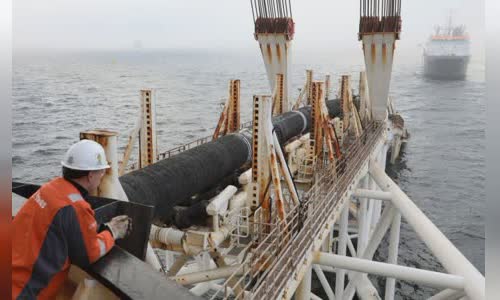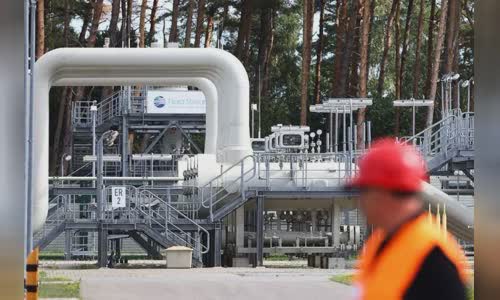Three consecutive leaks at two Nord Stream gas pipes from Russia to Germany show how vulnerable European energy infrastructure is.
Nord Stream AG, the unit operating the Nord Stream 2 gas pipe, on September 26, discovered a sudden voltage drop, may be due to a leak, on the gas system from Russia to Germany through the sea.
A few hours later, Nord Stream AG announced that the phenomenon of reducing pressure on Nord Stream 1, another gas pipeline from Russia to Germany runs in parallel with Nord Stream 2.
The gas bubbles leaked from the Nord Stream 2 pipe to the Baltic sea surface, near the Danish Island Balholm, on September 27.
The image taken by the Danish army shows that air bubbles with a diameter of 200-1,000 m emerge the water from three leaked positions of the Nord Stream system in the exclusive economic zone of this country and Sweden.
The Swedish national seismic network has recorded two large energy liberation cases near the leaked position on the Nord Stream 1 pipe off the coast of Bornholm Island of Denmark.
This information sparked rumors that two gas pipelines from Russia to Europe were attacked with explosives and this could be a sabotage conspiracy.
The head of the Danish Energy Agency Kristoffer Bottzauw assesses the leaking holes are huge and can take a week for the gas to stop escaping from the Nord Stream 2 pipe.
Simone Tagliapietra, a senior expert at Bruegel Consulting Organization in Brussels, Belgium, said that the Nord Stream pipeline attack may be a blow into the very fragile energy security system of Europe.
A series of leaks will cause more tension to the EU gas market, even when the flow through Nord Stream has been cut, he said.

Photo: DPA
German Economic Minister Robert Habeck told the business leaders of this country that leaks were due to intentional attacks and Berlin knew for sure that they were not due to incidents or natural phenomena.
The Swedish and Denmark Prime Minister said the leak was clearly due to intentional actions, with the information so far in favor of the sabotage pipes.
We are talking about three leaks with a distance not too far from each other.
The worker installed Nord Stream 2 pipes in 2018. Photo: DPA.
Russia also said that the possibility of destructive pipes is possible and these leaks are weakening Europe's energy security.
The incident occurred when a new gas pipeline between Norway and Poland was inaugurated on September 27.
In all cases, this will be a clear reminder of the level of risk for European burning infrastructure, which commented.
A senior Ukrainian official accused Russia for causing Nord Stream pipeline attacks to incite instability in Europe, but not to provide evidence.

Photo: Reuters
European Commission Chairman Ursula Von Der Leyen on the evening of September 27 wrote on Twitter that she had talked to the Danish Prime Minister about the destructive action against Nord Stream pipes, and called for an investigation of an investigation.
Any intentional act to disrupt European operating energy infrastructure is unacceptable and will lead to the most powerful response possible, she declared.
Part of the Nord Stream 1 pipeline in Lubmin, Germany on August 30.
However, analysts believe that the investigation process will take a lot of time because it is necessary to maneuver submarine to explore the seabed where the airborne pipes are located.
Both leaked pipes are currently not injected with gas to Europe, because Nord Stream 2 has not been put into operation, and Nord Stream 1 has been closed in August by Russia on August with the technical problem at the air compressor station.
Julian Pawlak, an expert at the German strategic and Defense Research Institute, said the leak of Nord Stream was a convincing evidence that the important European infrastructure faced how big risks
This is also a reminder of Europe that their energy infrastructure is very vulnerable, even when they are gradually escaping depending on the gas and Russian oil.
The US Central Intelligence Agency (CIA) in June warned some European countries, including Germany, that the Nord Stream pipe could be destroyed, according to some senior US officials AM.
The most obvious message here is what happens to a closed pipeline that can also happen with the active pipes or cable under the sea or any other infrastructure, PawLak expert said.



 Ibothoi Mangang Sanasam
Ibothoi Mangang Sanasam







